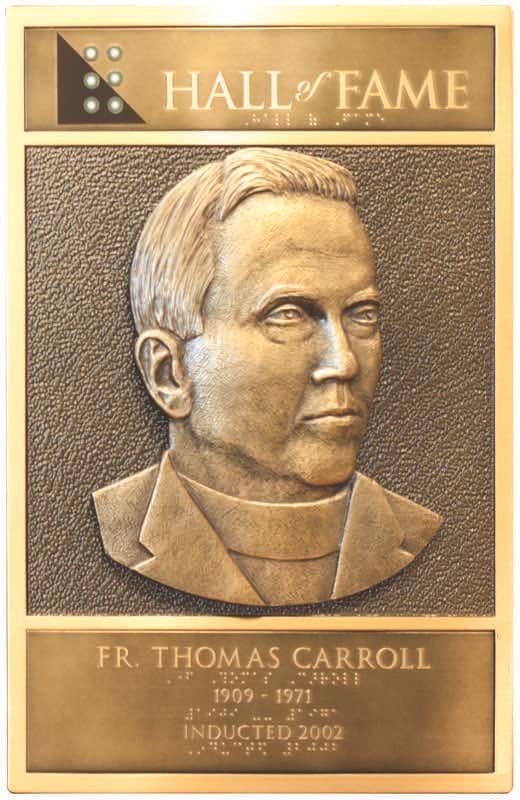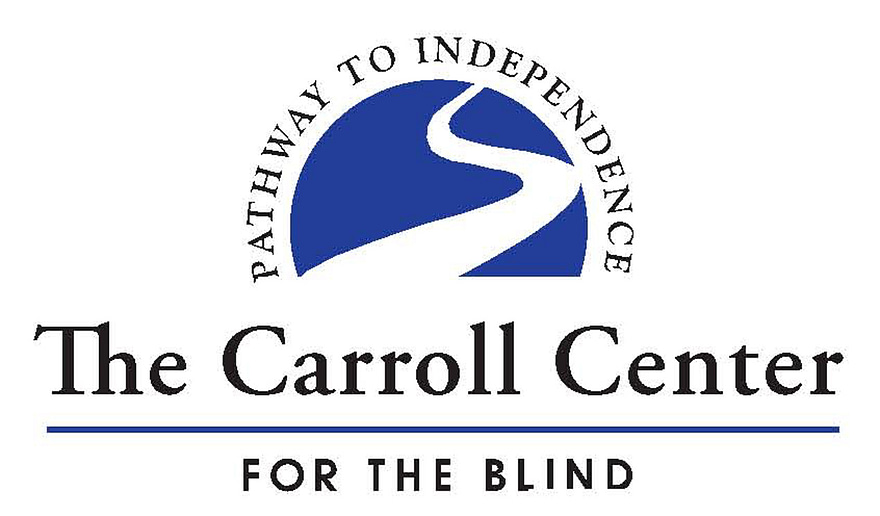
Father Thomas J. Carroll is a legendary figure whose steadfast empowerment of the blind shines like a beacon for those who seek to follow his footsteps in the field of education and rehabilitation of the visually impaired. A fervent promoter of civil rights for African Americans, Carroll has compassion for all, actively supporting legislation and standing along-side Martin Luther King Jr at the Selma Marches.
The 20th century reformer for blind rehabilitation, is most well-known for being the founder of The Carroll Center in Newton, Massachusetts which continues to serve visually impaired community members of all ages and degrees of vision loss. Born in 1909 near Boston, Massachusetts as the only boy in a large family of girls, young T.J. graduated from Holy Cross College having studied languages and philosophy. Thinking of sharing God’s Word through pastoring, he chose to go on to seminary at St. John’s, obtaining priesthood in 1938.
With a strong passion for God, his church, and his work of bringing his love to every type of people, Carroll never sought positions of power or wealth during his career, treasuring his mission of bringing spiritual light to the blind instead. His first position was Assistant Director to the Catholic Guild for the Blind where he lived in a basement apartment of St. Rafael’s Hall, a rest home for elderly blind women. Up until World War II, Father Carroll worked with students at the Perkins Institute for the Blind, providing instruction in Christian Doctrine among other subjects, and conducting mass for the women of the home who were blind or deafblind.
When World War II times rolled around, Carroll was quick to jump at the chance to serve blinded veterans, as such he is considered a leading hero of the Blinded Veterans Association today. During this period, he worked at both Avon Old Farms Convalescent Hospital and Valley Forge General Hospital which were experimental rehabilitation facilities of the U.S Army. As the chaplain of these healing vets, he not only helped them to accept their new situation and provided training, but as a mark of authenticity, built strong friendships with them as individuals. After his promotion to director of The Catholic Guild for the Blind in 1947, he established the first comprehensive Orientation and Mobility instructional program based on research conducted by the hospitals’ staff. Carroll’s method centered on the long white cane as the key to independent navigation that would enable these young men to rejoin mainstream post-war society.
Taking great lengths, Father Carroll succeeded in transforming the guild from a social welfare organization to one with a clear rehabilitative focus. The rest home he once dwelled in became St. Paul’s Rehabilitation Center for the Blind in 1954, one of the first and only programs for newly blinded civilians to receive comprehensive services. From this foundation evolved the Carroll Center for the Blind of the present day. Many field advances, publications, and honors would follow because of his staunch and unfaltering advocacy.
More remarkable perhaps, than all his many positions, accomplishments, and accolades, is the reason behind his life’s work. He wasn’t just a reformer, he was a man answering his God-given calling, to love a particular population of marginalized people. They were made in the image of God, capable of learning to live in peace with any sort of physical limitations with the right support structure. Upon one occasion, Carroll explained that he had no need of assignment to a parish, because blind people served as his parish. The blind were endowed by their creator with intrinsic value, worthy of educational, career, and societal opportunities as were other groups he served such as veterans, racial minorities, the pour, and those with multiple disabilities. It can only be assumed that these convictions were key to keeping his fervor alight as he blazed his way towards a spot on the American Printing House’s Hall of Fame, transforming many lives in the process.
By understanding the historical perspective of the blindness rehabilitation field, we today can appreciate the uphill battle pioneers like Father Carroll fought and won to provide us with a bedrock for constructing a way for visually impaired to be effectively empowered, rather than just taken care of. Before his work, few believed that the blind could function within normal society and even fewer were interested in using resources to help them do so. Thomas Carroll spent his life proving how false those assumptions were. His spirit of commitment to change, willingness to get to know the people he served, and inventive problem solving are characteristics necessary for every new generation of those who strive to empower themselves, others, and their communities.

Visit the website of The Carroll Center for the Blind to learn what services are available to assist you and or your loved one today!
References
Carroll, T. J., Muldoon, J. F., & Furlong, T. F. (1990). Essays on Blindness Rehabilitation in honor of Thomas J. Carroll: A Festschrift. American Foundation for the Blind.
DesRoses, L. (2021, October 1). “caution, Blind Priest Driving” — the life of father Thomas Carroll. TheBostonPilot.com: America’s oldest Catholic newspaper. http://www.thebostonpilot.com/article.php?Source=Trending&ID=190741
Our founder – father Thomas J. Carroll. The Carroll Center for the Blind. (2021, October 26). https://carroll.org/our-history/our-founder/
Tuttle, D., & Tuttle, N. (n.d.). Father Thomas Carroll inducted 2002. Father Thomas Carroll. https://sites.aph.org/hall/inductees/carroll/
